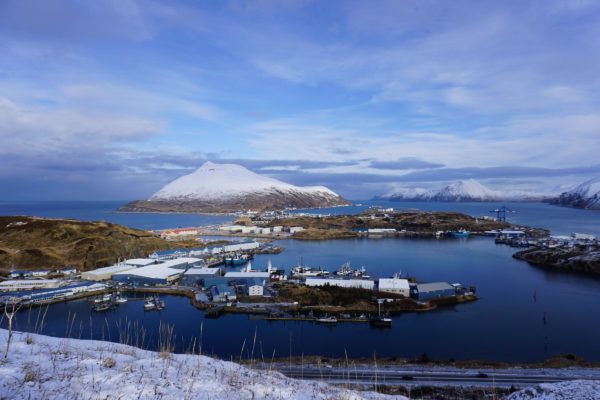Dutch Harbor has been named the nation’s top fishing port by volume of seafood landed for the 23rd consecutive year. The Aleutians East Borough — including Akutan, False Pass, Sand Point and King Cove — rose from third to second place.

That’s according to an annual report from the National Oceanic and Atmospheric Administration released earlier this month on the status of U.S. fisheries in 2019.
Frank Kelty is a former Unalaska mayor, who retired in 2013, and now works as a contractor for the city on fisheries issues. He said NOAA’s annual reports are a bit dated: Data from 2019 was just reported, though 2021 is half over. Even so, he said, the reports provide an important snapshot of fishing seasons, how production is going, and the value of landings being processed.
“It’s a good tool to point out the importance of what goes on in this community, the high volume of product that’s produced here and the importance of Unalaska/Dutch Harbor to the seafood industry not just in Alaska, but in the nation as a whole,” Kelty said.
According to the federal report, Dutch Harbor landed 763 million pounds of seafood in 2019, valued at $190 million. That’s the same weight as 2018, but about $8 million more in value.
What does 763 million pounds in seafood look like exactly? It’s equivalent to roughly 50,000 pretty big elephants or 1,000 Boeing 747 jets.
The majority of that volume in 2019 — 93% — is from Alaska pollock, which goes into products like fish sandwiches, fish sticks and sushi.
But while the amount of fish landed in Dutch Harbor is far greater than any other port in the country, the Aleutian community remains in third place in terms of dollar value — topped by New Bedford, Mass., in first place and Naknek in second.
That’s because of the lower-value seafood landed on the island, according to Kelty.
“The pollock fishery is the largest fishery in the nation,” he said. “But the value is very low compared to lobster, scallops, Alaska king crab and things like that.”
Kelty moved to Unalaska to fish for crab in the Bering Sea and has spent about 50 years on the island. He said Unalaska keeping its spot as a top port in the nation is a testament to the health of the seafood industry in the Aleutians. But, he cautioned, things can change quickly.
“I was here when we had the red king crab collapse,” he said. “We went from one year of 130 million pounds, down to 30 million and then no season after that — and that was just in a two-year timeframe. So things can happen.”
The seafood industry is Unalaska’s only major economic engine. And as the climate changes, water temperatures rise, and some species migrate further north, Kelty said it could be bad for a shore-based operation like Unalaska.
“It’s definitely something that we have to keep our eye on,” he said. “But it’s nice to have this snapshot from the federal government that shows us what’s been going on and the timeline that it lays out over the years.”
In total, U.S. fishermen landed 9.3 billion pounds of seafood valued at $5.5 billion in 2019. Sixty percent was caught in Alaska.




